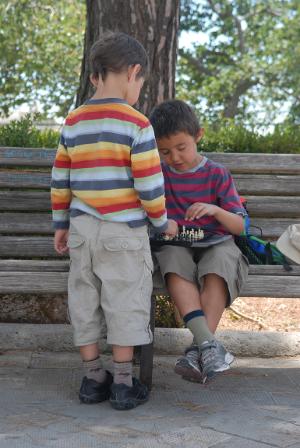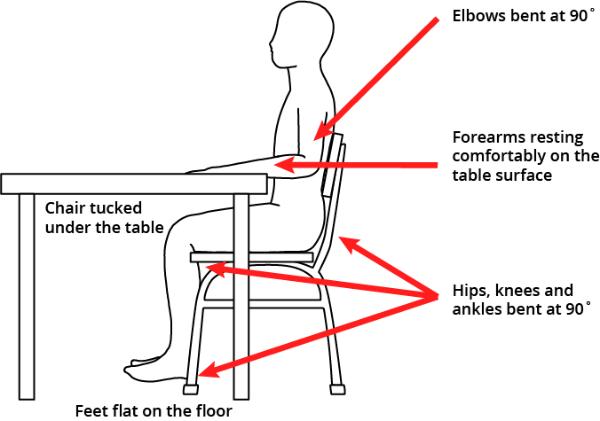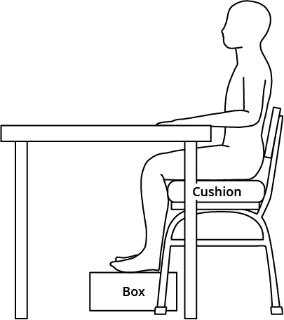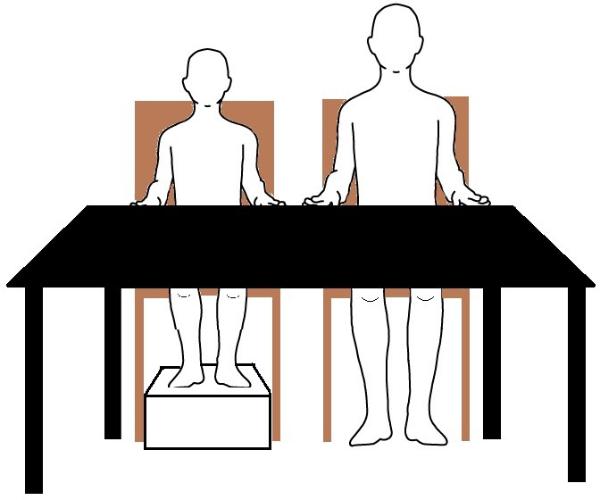Set-up for Play

It's important to get your child playing and doing therapy whilst having fun! However, you may get the best out of their hand function if they are properly seated. Here are some tips on how to do this:
The best place to play with these toys and games is seated at a table. This makes it easier for your child to use both arms together so that two-handed play is more comfortable and successful. This is because less energy is needed to lift and move both arms than when playing in other positions such as when sitting on the floor or on sofas and armchairs.
We recommend that your child sits as shown here:


All four chair legs should be firmly touching the floor.
Your child should be able to:
- Rest his/her feet on the floor.
- Have hips and knees bent to about 90 degrees.
- Rest his/her elbows comfortably on the table surface while shoulders are relaxed.
- Rest his/her lower back against the back of the chair.
Depending upon your child’s age and height, the table and chairs you have in your home may not be the correct size for your child and you may need to make some adjustments. If the chair height is too low we suggest sitting your child on a cushion and using a box or a pile of large books under your child’s feet.
If you still have difficulty achieving a good seating position then please ask your child’s therapist for advice.
If the table height is too low then table raisers may help. Your child’s therapist will be able to give you more information about these.
Once your child is seated correctly we recommend that someone sits with your child to give encouragement to use both hands while playing with the toys as described in the individual “Fun ‘n’ Games” instruction sheets.
Sit to your child’s helper hand side and try to place some of the toy pieces on the helper hand side of the table. This will encourage your child to reach for and grasp toys with the helper hand.

Here the parent is sitting on the helper-hand side of their child who has a left hemiplegia. If your child has a right hemiplegia please sit on their right side.
